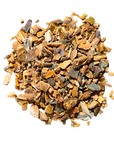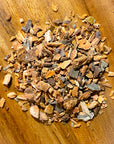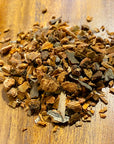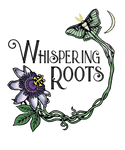


Wild Cherry Bark
Botanical name: Prunus serotina
^Organic
Wild cherry bark, Prunus serotina, is derived from the bark of the black cherry tree, which belongs to the Rosaceae family. This tree is native to North America and is typically found in forests, thriving in well-drained, sandy soils. Wild cherry bark is characterized by its reddish-brown color and distinctive horizontal lenticels, with a sweet, almond-like aroma.
In herbal medicine, wild cherry bark has been traditionally valued for its potential benefits in soothing coughs and supporting respiratory health. The bark can be prepared as a tea, syrup, or tincture, offering a slightly sweet and aromatic flavor. Historically, it has been used by Indigenous peoples for its reputed effects in alleviating symptoms of colds and coughs.*
*These statements have not been evaluated by the Food and Drug Administration. This product is not intended to diagnose, treat, cure, or prevent any disease. For educational purposes only.



